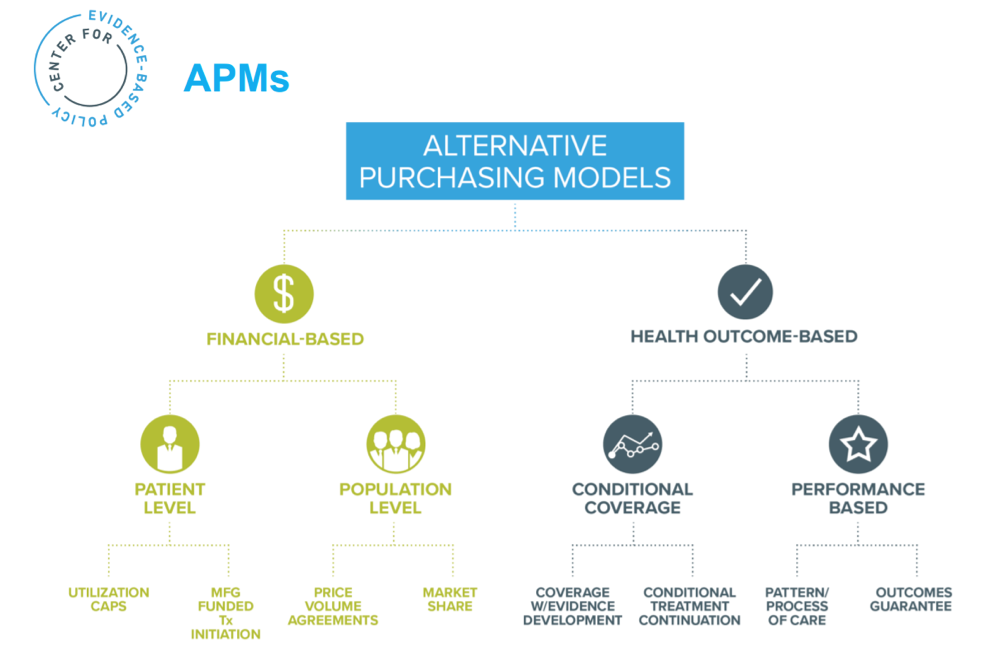Value-Based Purchasing for Prescription Drugs Takes a Leap Forward in State Medicaid
The U.S. Department of Health and Human Services (HHS) and the Centers for Medicare & Medicaid Services (CMS) are commitment to support value-based purchasing (VBP) of prescription drugs in Medicaid, despite headlines of CMS’s rejection of a Massachusetts request to make changes in its Medicaid prescription drug benefit.
Brenda Gleason

This week, the U.S. Department of Health and Human Services (HHS) and the Centers for Medicare & Medicaid Services (CMS) made clear their commitment to support value-based purchasing (VBP) of prescription drugs in Medicaid, though you might not know it from reading the headlines.
News outlets seemed to focus on CMS’s rejection of a Massachusetts request to make changes in its Medicaid prescription drug benefit:
- Modern Healthcare: “CMS denies Massachusetts' request to choose which drugs Medicaid covers.”
- Politico: “The Trump administration on Wednesday denied a pioneering request from Massachusetts to limit prescription drug coverage in its Medicaid program.”
- Washington Examiner: “Trump administration denies Massachusetts’ bid to control drug costs”
In September 2017, Massachusetts submitted a Medicaid waiver to “Adopt a commercial-style closed formulary with at least one drug available per therapeutic class,” and “Exclude from the formulary drugs with limited or inadequate evidence of clinical efficacy,” among other asks. CMS responded June 27, 2018, essentially arguing the Massachusetts proposal violated federal Medicaid rebate law: “The state's proposal was not consistent with these requirements…which would have allowed the State to continue to collect manufacturer rebates under Section 1927, while enabling the state to exclude certain drugs from coverage.”
Section 1927 of the Social Security Act, referred to by health policy types as the Medicaid Drug Rebate Program (MDRP) is often cited as a barrier to more innovative purchasing arrangements between states and manufacturers for prescription drugs. The National Association of Medicaid Directors (NAMD) wrote to the Senate Finance Committee in March of 2016:
In the Medicaid context, the requirements of the MDRP as currently structured pose barriers to value-based prescription drug purchasing…States are interested in designing value-based reimbursement strategies for prescription drugs provided by the Medicaid program. To do so, state Medicaid agencies require new flexibility and tools to pioneer innovative solutions and, if possible, bring these solutions to scale. The MDRP construct is not designed to support an all-encompassing vision of value for prescription drugs, for the reasons we have discussed above. To reiterate, the MDRP does not create meaningful incentives or parameters for pricing new therapies.
NAMD continued, “…it is currently unclear to what extent states may enter into value-based purchasing arrangements with manufacturers under the MDRP. States need clarity as to whether such arrangements are possible under existing program authorities…”
While the Massachusetts approach was disapproved, CMS did provide additional clarity to states this week by signing-off on a request from Oklahoma, creating the flexibility Medicaid Directors have been asking for. On June 27, 2018, CMS approved Oklahoma’s state plan amendment (SPA) proposal to authorize the state to “negotiate supplemental rebate agreements for pharmaceuticals involving value-based purchasing [VBP] arrangements with drug manufacturers.”
The proposal, the first of its kind to be approved by CMS, will allow Oklahoma to work directly with pharmaceutical manufacturers to create alternative purchasing models for Medicaid drugs. According to the CMS press release, “The state and each manufacturer can now jointly agree on benchmarks based on health outcomes and the specific populations for which these outcomes-based benchmarks will be measured and evaluated.” The approval implies that if other states were to ask CMS for such permission to negotiate VBP arrangements with manufacturers, such requests would likely be approved.
Alternative Purchasing Models At A Glance
Alternative purchasing models (APMs) can take a variety of forms and may also be referred to as value-based or outcomes-based contracting. Rhonda Anderson, RPh, the Director of Pharmacy for the Center for Evidence-based Policy at Oregon Health & Science University (OHSU), in a presentation at the National Conference of State Legislators meeting last December, showed the following handy graphic of the various types of APMs:
Click to enlarge.

Since OHSU has been working with “test” states on APMs for Medicaid prescription drugs for the past 18 months or so, they have found: “Alternative models that generate viable discussions have certain characteristics, such as:
- Good competition in drug class, with some branded drugs newer to market, and a contract outcome measure that can be easily tracked in claims data.
- Rare or orphan diseases where the Medicaid program can organize patient care into a center of excellence model including wrap-around patient care services to improve clinical outcomes, drug adherence, and data gathering for clinical outcome measures.
- Multi-state opportunities where a drug manufacturer needs scale and a certain number of lives to make an alternative model worthwhile for outcome measurement.”
And Oklahoma Will Be the First!
In a briefing held by the Alliance for Health Policy on May 11, 2018, Terry Cothran, the Director of Pharmacy Management Consultants, a division of the University of Oklahoma College of Pharmacy, which administers the prescription drug benefit in Oklahoma’s Medicaid Program, said Oklahoma aimed to “be one of the first Medicaid states to have an alternate payment model.
Cothran, in discussing Oklahoma’s plans, noted the following about the state’s approach to VBP for Rx:
- Reducing financial risk is a goal of the state
- VBP models are likely to be “tied to a clinical outcome based on [the drug’s] performance”
- “We’ve initiated talks with 20 manufacturers. At this point, eight have opted out. Two are on hold and want to do a little research on their side. We have four that are still in discussions, and then six, we’re actually doing some type of contract negotiation…”
- “…our approach originally, from when we started doing this, was to target some of the new drugs that were half a million dollars, but we found very quickly some of those single entity manufacturers did not have much of an interest since they didn’t have much competition in that area.”
States have been asking for additional flexibility to address prescription drug access and costs in their Medicaid programs. The approval of the Oklahoma SPA this week clearly shows CMS’s support of VBP arrangements for prescription drugs in Medicaid and indicates alternative arrangements proposed by other states related to prescription drug access and payment will be considered if they are negotiated directly between manufacturers and states.
Brenda Gleason is founder of M2 Health Care Consulting.
Trump: 'Major Tariff' on Pharmaceuticals Coming Soon
Published: April 9th 2025 | Updated: April 9th 2025“We’re going to tariff our pharmaceuticals, and once we do that, they are going to come rushing back into our country," President Donald J. Trump said during a Tuesday night dinner in Washington.
ROI and Rare Disease: Retooling the ‘Gene’ Value Machine
November 14th 2024Framework proposes three strategies designed to address the unique challenges of personalized and genetic therapies for rare diseases—and increase the probability of economic success for a new wave of potential curative treatments for these conditions.